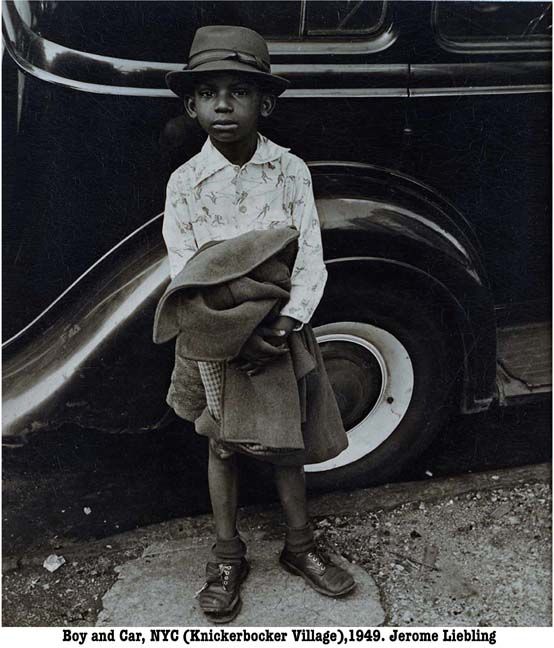
I don't know how it happened, but I was searching for additional information about Sal Lombino/Evan Hunter/Ed McBain's link to Knickerbocker Village and I stumbled upon this picture on the smithsonian site
about Jerome Liebling from his site
I wrote to him to find out about his KV connection. I figure he must know Rebecca Lepkoff if he belonged to the Photo League. They are close in age.
Jerome Liebling's career as a Photographer, Filmmaker and Teacher spans nearly fifty years. In the 1940s, he studied photography under Walter Rosenblum and Paul Strand, and joined New York's famed Photo League. In the same period, he became involved with motion-picture production, and worked as a documentary filmmaker.
While a professor of film and photography at the University of Minnesota in Minneapolis, Liebling began what was to be a longtime collaborative relationship with filmmaker Allen Downs; over the following two decades, they produced several award-winning documentaries, including Pow Wow, The Tree Is Dead, and The Old Men.
Throughout the years, Liebling has continued his seminal work in photography. His images have been the subject of many books and monographs, and his work has appeared in countless exhibitions.
Liebling has received numerous awards and grants, including two Guggenheim fellowships, a National Endowment for the Arts Photographic Survey Grant, and a fellowship from the Massachusetts Council on the Arts. His photographs are in the permanent collections of many museums, including the Museum of Modern Art in New York, the Boston Museum of Fine Arts, the Fogg Museum in Cambridge, Massachusetts, the Corcoran Gallery of Art in Washington, D.C., and the National Gallery of Canada in Ottawa. Liebling is currently professor emeritus of Hampshire College, and lives in Amherst, Massachusetts.
Liebling, an admired and influential photographer and filmmaker, has always affirmed "everyday people" as being central to his photography. His work, along with other members of the renowned Photo League, helped raise the documentary photograph to the level of fine art. Set against the changing terrain of the city, from the 1940s, when Liebling shot his earliest photos, to the 1970s and '80s, when his camera studied the ruined landscapes of the South Bronx and the vitality of the Russian immigrant community in Brighton Beach, the photographs depict the tenacity and vibrant individuality of his "ordinary" subjects.
Liebling's people range from street corner urchins to elderly women bedecked in furs and jewelry. His subjects play handball in Brooklyn, march in a May Day Parade in Union Square, Liebling, work in a New York meat market. They encompass the full range of age, gesture and circumstance. No matter their situation, Liebling's subjects reflect his abiding sense of their dignity and humanity. The documentary filmmaker Ken Burns, one of many students whom Liebling influenced, has commented on how Liebling taught him and others "to respect the power of the single image to communicate." Liebling's photos do communicate, and even when he's looking at a street filled with rubble and devoid of people, humanity is never far removed.
Liebling's early New York pictures are documentary studies in black and white. He photographed them in the 1940s, when he was a student at Brooklyn College and a member of the Photo League. Following two decades in the Midwest, Liebling returned to New York, documenting--first in black and white and later in color--the dramatic transformations of the city. Together the early and late group show us much of New York's declining neighborhoods and its durable people.


























No comments:
Post a Comment